Your Malignant gastrointestinal stromal tumor images are available. Malignant gastrointestinal stromal tumor are a topic that is being searched for and liked by netizens today. You can Download the Malignant gastrointestinal stromal tumor files here. Find and Download all free images.
If you’re looking for malignant gastrointestinal stromal tumor pictures information connected with to the malignant gastrointestinal stromal tumor topic, you have pay a visit to the right blog. Our site always provides you with suggestions for downloading the maximum quality video and picture content, please kindly hunt and find more informative video articles and graphics that match your interests.
Malignant Gastrointestinal Stromal Tumor. Gastrointestinal stromal tumors GIST are a type of soft tissue tumor that usually begin in specialized nerve cells in the wall of the stomach intestines or rectum known as interstitial cells of Cajal. They rarely obstruct viscera despite their large size and propensity to metastasize to the liver and peritoneum. A cancerous tumor is malignant meaning it can grow and spread to other parts of the body. GISTs occur anywhere along the gastrointestinal tract.
 What Is Gastrointestinal Stromal Tumors How Is It Treated From epainassist.com
What Is Gastrointestinal Stromal Tumors How Is It Treated From epainassist.com
Gastrointestinal stroma tumor GANT is now considered to be GIST. Rarely these tumors do arise in structures other than the alimentary tract like omentum mesentery. C3272421 A gastrointestinal stromal tumor arising from the stomach. These tumors often grow into the empty space inside the gastrointestinal GI tract so they might not cause symptoms right away unless they are in. GISTs occur anywhere along the gastrointestinal tract. A tumor can be cancerous or benign.
This is CancerNets Guide to Gastrointestinal Stromal Tumor - GIST.
Myogenic gastrointestinal stromal tumor a distinctive morphologic variant is characterized by an. Enlarge Gastrointestinal stromal tumors GISTs may be found anywhere in or near the gastrointestinal tract. Gastrointestinal stromal tumors GIST are a type of soft tissue tumor that usually begin in specialized nerve cells in the wall of the stomach intestines or rectum known as interstitial cells of Cajal. This is CancerNets Guide to Gastrointestinal Stromal Tumor - GIST. If cancerous the tumor may also be called a soft tissue sarcoma. Malignant GISTs are typically large well-circumscribed heterogeneous centrally necrotic tumors that arise in the wall of the small bowel or stomach.
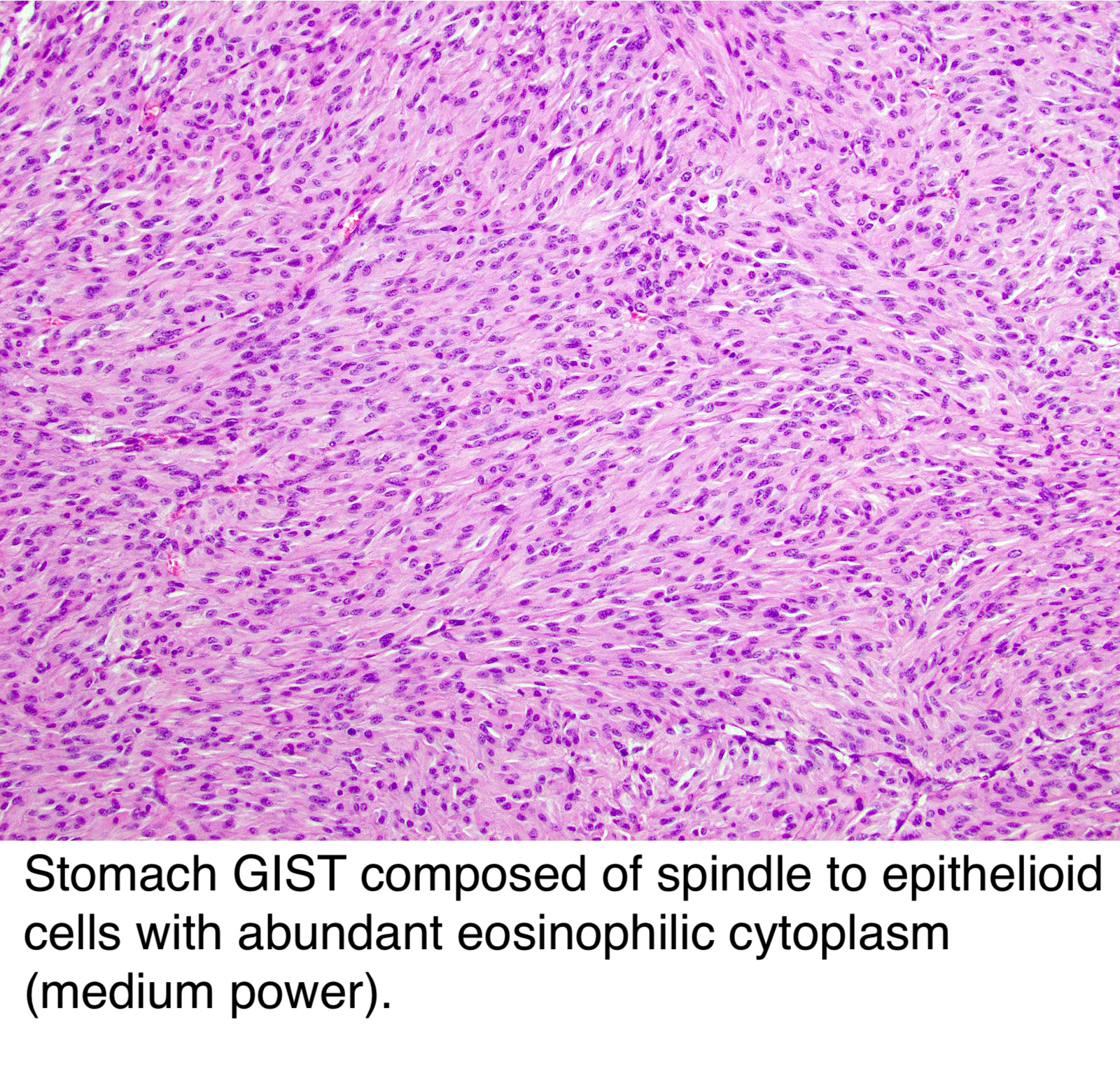 Source: pathologyoutlines.com
Source: pathologyoutlines.com
A cancerous tumor is malignant meaning it can grow and spread to other parts of the body. Malignant Gastrointestinal Stromal Tumor GIST is a rare type of soft tissue tumor that usually begins in cells in the wall of the stomach intestines or rectum. GIST may be noncancerous benign or cancerous malignant. Each guide is reviewed by experts on the CancerNet Editorial Board which is composed of medical surgical radiation. It is characterized by large size diameter greater than 10 cm or more than 5 mitotic figures per 50 high power fields.
 Source: cancer.org
Source: cancer.org
The 2022 edition of ICD-10-CM Z8509 became effective on October 1 2021. A gastrointestinal stromal tumor GIST is a rare tumor in the gastrointestinal GI or digestive tract. Gastrointestinal stromal tumors GIST are a type of soft tissue tumor that usually begin in specialized nerve cells in the wall of the stomach intestines or rectum known as interstitial cells of Cajal. Malignant gastrointestinal stromal tumors M-GIST are rare mesenchymal tumors originating in the wall of the gastrointestinal GI tract. To understand GISTs it helps to know something about the structure and function of the GI tract.
 Source: ncbi.nlm.nih.gov
Source: ncbi.nlm.nih.gov
Gastrointestinal stromal tumor is a disease in which abnormal cells form in the tissues of the gastrointestinal tract. Smooth muscle fibroblastic and nerve sheath tumors are excluded see Differential Diagnosis Principal patterns are spindled or epithelioid may be mixed. Gastrointestinal stromal tumors GISTs the commonest mesenchymal tumors of gastrointestinal tract are often described to take origin from the interstitial cells of Cajal ICC or its precursor cells. Malignant gastrointestinal stromal tumors GIST are rare mesenchymal tumors originating in the wall of the gastrointestinal tract. GIST tumors are caused by mutations in the PDGFRA gene.

Those occurring outside of the gastrointestinal tract comprise a specific type of GIST known as extra-gastrointestinal stromal tumors EGISTs. GIST may be noncancerous benign or cancerous malignant. Gastrointestinal stroma tumor GANT is now considered to be GIST. Malignant GISTs are typically large well-circumscribed heterogeneous centrally necrotic tumors that arise in the wall of the small bowel or stomach. Gastrointestinal stromal tumors GISTs span a wide clinical spectrum that ranges from lesions with essentially no metastatic potential to malignant and life-threatening metastatic tumors.
 Source: mottchildren.org
Source: mottchildren.org
Genetic factors can increase the risk of having a gastrointestinal stromal tumor. It is characterized by large size diameter greater than 10 cm or more than 5 mitotic figures per 50 high power fields. GIST tumors are caused by mutations in the PDGFRA gene. Smooth muscle fibroblastic and nerve sheath tumors are excluded see Differential Diagnosis Principal patterns are spindled or epithelioid may be mixed. They coordinate the automatic movements of the GI tract.
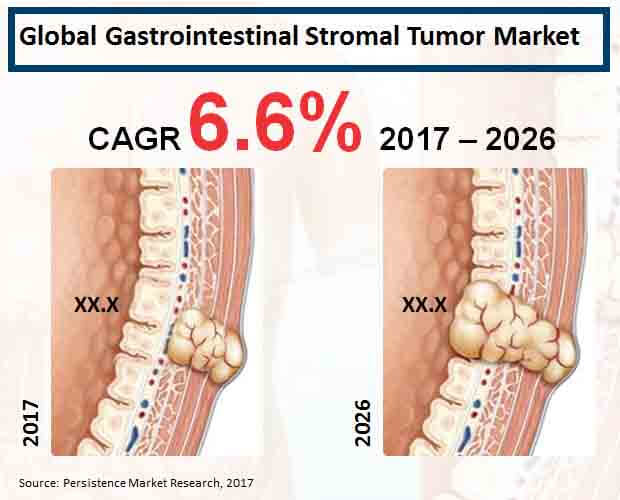 Source: persistencemarketresearch.com
Source: persistencemarketresearch.com
The molecular understanding of the biologic underpinnings of GIST has led and is currently leading to the rational development of therapeutic approaches successfully. Enlarge Gastrointestinal stromal tumors GISTs may be found anywhere in or near the gastrointestinal tract. Small intestine is the second most common primary site 3035 after the stomach 5060. GIST tumors are caused by mutations in the PDGFRA gene. They coordinate the automatic movements of the GI tract.
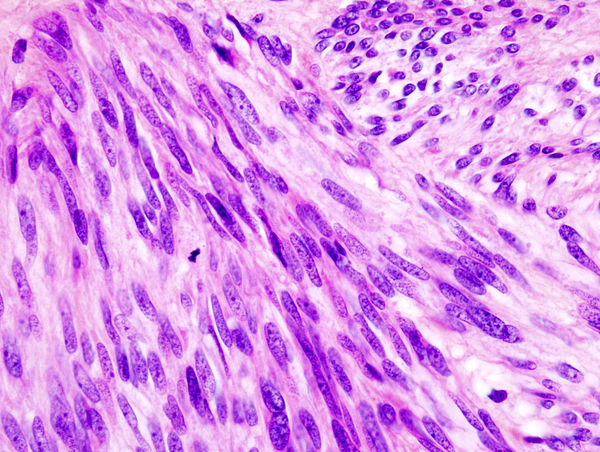 Source: wikiwand.com
Source: wikiwand.com
Malignant Gastric Gastrointestinal Stromal Tumor Concept Id. These tumors often grow into the empty space inside the gastrointestinal GI tract so they might not cause symptoms right away unless they are in. Previous studies have included limited numbers of patients and most included malignant and benign cases from throughout the GI tract. About gastrointestinal stromal tumor GIST A tumor begins when healthy cells change and grow out of control forming a mass called a tumor. Smooth muscle fibroblastic and nerve sheath tumors are excluded see Differential Diagnosis Principal patterns are spindled or epithelioid may be mixed.
 Source: researchgate.net
Source: researchgate.net
Smooth muscle fibroblastic and nerve sheath tumors are excluded see Differential Diagnosis Principal patterns are spindled or epithelioid may be mixed. Previous studies have included limited numbers of patients and most included malignant and benign cases from throughout the GI tract. Most gastrointestinal stromal tumors GISTs develop within the wall of the stomach or small intestine. Rarely these tumors do arise in structures other than the alimentary tract like omentum mesentery. This type of tumor is thought to grow from specialized cells found in the gastrointestinal tract called interstitial cells of Cajal ICCs or precursors to these cells.
 Source: eusjournal.com
Source: eusjournal.com
Malignant gastrointestinal stromal tumors M-GIST are rare mesenchymal tumors originating in the wall of the gastrointestinal GI tract. GIST tumors are caused by mutations in the PDGFRA gene. A tumor can be cancerous or benign. Or you can choose another section to learn more about a specific question you have. A benign tumor means the tumor can grow but will not spread.
 Source: researchgate.net
Source: researchgate.net
They coordinate the automatic movements of the GI tract. Gastrointestinal stromal tumors GIST are a type of soft tissue tumor that usually begin in specialized nerve cells in the wall of the stomach intestines or rectum known as interstitial cells of Cajal. ICCs are part of the nervous system. A benign tumor means the tumor can grow but will not spread. Z8509 is a billablespecific ICD-10-CM code that can be used to indicate a diagnosis for reimbursement purposes.
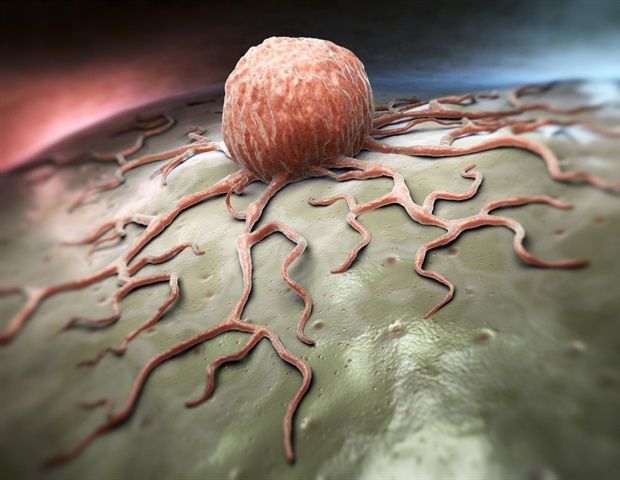 Source: news-medical.net
Source: news-medical.net
GIST tumors are caused by mutations in the PDGFRA gene. C3272421 A gastrointestinal stromal tumor arising from the stomach. It is characterized by large size diameter greater than 10 cm or more than 5 mitotic figures per 50 high power fields. Z8509 is a billablespecific ICD-10-CM code that can be used to indicate a diagnosis for reimbursement purposes. Small intestine is the second most common primary site 3035 after the stomach 5060.
 Source: researchgate.net
Source: researchgate.net
GIST tumors are caused by mutations in the PDGFRA gene. Malignant GISTs are typically large well-circumscribed heterogeneous centrally necrotic tumors that arise in the wall of the small bowel or stomach. Malignant Gastric Gastrointestinal Stromal Tumor Concept Id. This type of tumor is thought to grow from specialized cells found in the gastrointestinal tract called interstitial cells of Cajal ICCs or precursors to these cells. The molecular understanding of the biologic underpinnings of GIST has led and is currently leading to the rational development of therapeutic approaches successfully.
 Source: researchgate.net
Source: researchgate.net
If cancerous the tumor may also be called a soft tissue sarcoma. The 2022 edition of ICD-10-CM Z8509 became effective on October 1 2021. A cancerous tumor is malignant meaning it can grow and spread to other parts of the body. Each guide is reviewed by experts on the CancerNet Editorial Board which is composed of medical surgical radiation. Malignant Gastrointestinal Stromal Tumor GIST is a rare type of soft tissue tumor that usually begins in cells in the wall of the stomach intestines or rectum.
 Source: wjgnet.com
Source: wjgnet.com
C3272421 A gastrointestinal stromal tumor arising from the stomach. Malignant Gastric Gastrointestinal Stromal Tumor. Malignant gastrointestinal stromal tumors GIST are rare mesenchymal tumors originating in the wall of the gastrointestinal tract. Those occurring outside of the gastrointestinal tract comprise a specific type of GIST known as extra-gastrointestinal stromal tumors EGISTs. To understand GISTs it helps to know something about the structure and function of the GI tract.
 Source: slidetodoc.com
Source: slidetodoc.com
Previous studies have included limited numbers of patients and most included malignant and benign cases from throughout the GI tract. Personal history of malignant neoplasm of digestive organs. Each guide is reviewed by experts on the CancerNet Editorial Board which is composed of medical surgical radiation. They start in cells called the interstitial cells of Cajal ICCs. Those occurring outside of the gastrointestinal tract comprise a specific type of GIST known as extra-gastrointestinal stromal tumors EGISTs.
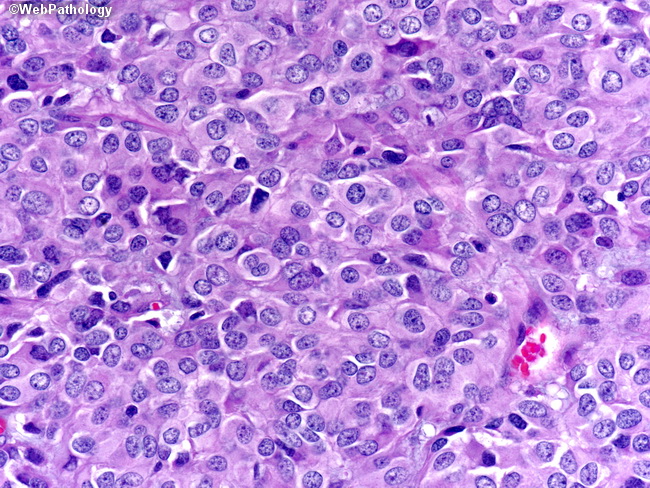 Source: webpathology.com
Source: webpathology.com
ICCs are part of the nervous system. Spindled 23 of cases. This type of tumor is thought to grow from specialized cells found in the gastrointestinal tract called interstitial cells of Cajal ICCs or precursors to these cells. About gastrointestinal stromal tumor GIST A tumor begins when healthy cells change and grow out of control forming a mass called a tumor. If cancerous the tumor may also be called a soft tissue sarcoma.
 Source: annalsofoncology.org
Source: annalsofoncology.org
Gastrointestinal stromal tumors GISTs are the most common gastrointestinal tract tumors of mesenchymal origin. Less frequently GIST may arise in the appendix gallbladder pancreas retroperitoneum and paravaginal and periprostatic tissues Approximately 20 to 25 of gastric GIST and 40 to 50 of small intestinal GIST are clinically aggressive910 It has been. Each guide is reviewed by experts on the CancerNet Editorial Board which is composed of medical surgical radiation. Smooth muscle fibroblastic and nerve sheath tumors are excluded see Differential Diagnosis Principal patterns are spindled or epithelioid may be mixed. They coordinate the automatic movements of the GI tract.
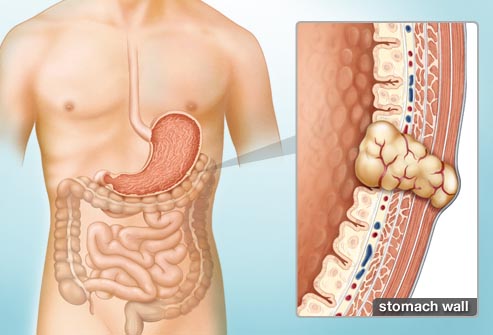 Source: creative-biolabs.com
Source: creative-biolabs.com
Gastrointestinal stroma tumor GANT is now considered to be GIST. Gastrointestinal stromal tumors GISTs are uncommon cancers that start in special cells in the wall of the gastrointestinal GI tract also known as the digestive tract. Z8509 is a billablespecific ICD-10-CM code that can be used to indicate a diagnosis for reimbursement purposes. Rarely these tumors do arise in structures other than the alimentary tract like omentum mesentery. This is CancerNets Guide to Gastrointestinal Stromal Tumor - GIST.
This site is an open community for users to do submittion their favorite wallpapers on the internet, all images or pictures in this website are for personal wallpaper use only, it is stricly prohibited to use this wallpaper for commercial purposes, if you are the author and find this image is shared without your permission, please kindly raise a DMCA report to Us.
If you find this site serviceableness, please support us by sharing this posts to your preference social media accounts like Facebook, Instagram and so on or you can also bookmark this blog page with the title malignant gastrointestinal stromal tumor by using Ctrl + D for devices a laptop with a Windows operating system or Command + D for laptops with an Apple operating system. If you use a smartphone, you can also use the drawer menu of the browser you are using. Whether it’s a Windows, Mac, iOS or Android operating system, you will still be able to bookmark this website.





